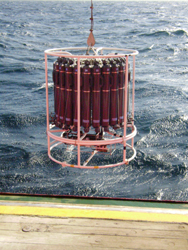Carbon export is making waves
While it is well known that the oceans are a major sink for carbon from the atmosphere, the exact mechanisms through which this export takes place are not well understood. It has been suggested that nitrogen-fixing organisms, known as diazotrophs, have an important role to play here. EU funding was set aside to examine this aspect in detail through the 'New approaches for understanding oceanic carbon uptake' (Carbon Export) project. In this context, a well-equipped research vessel was deployed to the Gulf of California to perform extensive sampling of its biologically rich waters. Measurements of nitrogen fixation at several depths have indicated a strong dependence both on the type of organisms present in the plankton mix and on sea-surface temperature. Evidence of a substantial contribution to carbon fixation made by unicellular Group A diazotrophs was found in colder waters just outside the Gulf. In addition, two naturally occurring radioisotopes, 234Th and 210Po, have been used to measure the carbon flux from the sea surface downwards. As expected, carbon export was very high in regions where the plankton population was enriched with diatoms. However, large fluxes were also recorded in areas with unicellular Group A diazotrophs. In fact, analysis revealed that they were much more efficient than diatoms at exporting carbon. These findings will allow for more accurate carbon cycling in global models and consequently help improve their predictions of future climate change.



